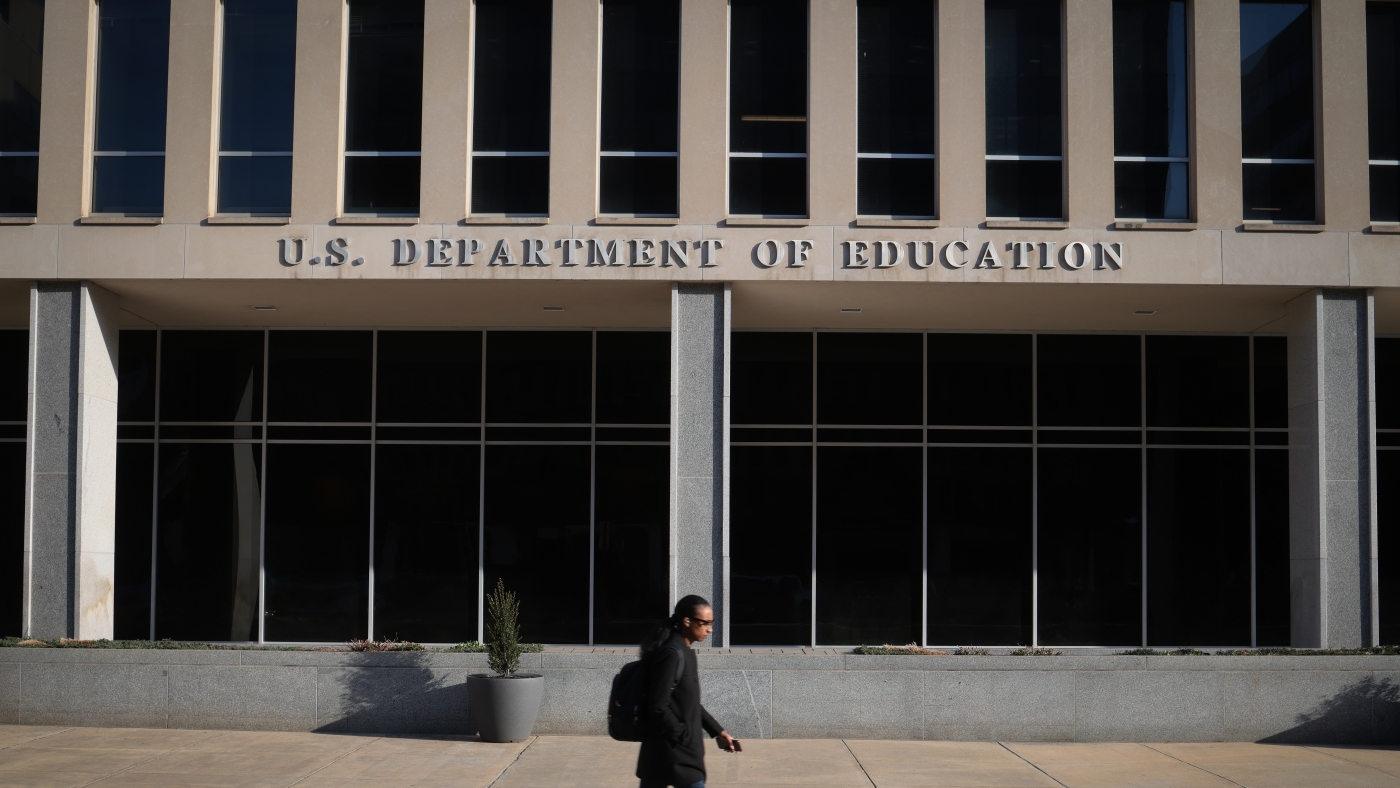Finance
Stock market today: Nasdaq, S&P 500 futures step higher as Netflix jumps after earnings beat

US stock futures rose on Friday, with tech in the lead as investors welcomed Netflix’s (NFLX) across-the-board earnings beat in the wait for the next batch of corporate results.
Futures on the tech-heavy Nasdaq 100 (NQ=F) moved up roughly 0.5%, while those on the S&P 500 futures (ES=F) added 0.2%. Dow Jones Industrial Average futures (YM=F) were little changed after hitting a fresh record closing high.
The major stock gauges are all on track for a sixth weekly win in a row after a strong showing by big banks to kick off earnings season.
Netflix’s results late Thursday relieved some worries that Big Tech names might struggle in the third quarter as they did in the last. The streaming giant’s profit surged to outstrip Wall Street estimates, while revenue and subscriber growth also came in stronger than expected. Its shares jumped over 6% in premarket trading.
At the same time, a rebound in Chinese stock markets propelled gains in US-listed shares of Alibaba (BABA), JD.com, (JD) and PDD (PDD). The rally came amid revived optimism for more stimulus to help China’s economy.
In commodities, gold (GC=F) prices hit a new record, topping $2,700 an ounce for the first time. Concerns about the Middle East conflict and uncertainty about the outcome of the US presidential election prompted a shift to less-risky assets.

Finance
Scotland’s finance secretary asks chancellor for assurances over tax plans

 PA Media
PA MediaScotland’s finance secretary has asked for a meeting and assurances from the chancellor over speculation she will raise income tax in her Budget.
Such a move, which Rachel Reeves refused to rule out last week, would lead to an automatic deduction from Scotland’s funding from the Treasury.
Shona Robison said Labour should ditch “outdated” fiscal rules which include making sure day-to-day spending is funded by tax revenues.
The Treasury said it would not comment on speculation but claimed its previous “record settlement” for Scotland meant it receives 20% more funding per head of population than the rest of the UK.
In an unusual pre-Budget speech in Downing Street last week, Reeves said she would make “necessary choices” in her tax and spending plans later this month after the world had “thrown more challenges our way”.
She did not rule out a U-turn on Labour’s general election manifesto pledge not to raise income tax, VAT or National Insurance, leading to speculation that a tax rise is on the way.
Any increase in income tax by the UK government could see a fall in the block grant Scotland receives from Westminster as a result of a funding agreement called the Block Grant Adjustment.
The Fraser of Allander Institute has estimated a 2p rise in the basic rate of tax elsewhere in the UK could cut Scotland’s budget by up £1bn, unless the Scottish government matches the increase with its own tax rise.
Robison said the chancellor’s speech had “piled uncertainty on uncertainty” and that she had requested an “urgent meeting” where she would set out three tests.
These are:
- The chancellor “ditch her outdated, restricted fiscal rules” and faces up to a “new reality”.
- All money raised from tax increases is invested in public services, meaning the block grant also increases as a result
- Confirmation that Scotland will not see a cut in funding
She said: “They came to office promising an end to austerity, so to impose it on Scotland would be a political betrayal from which Labour would never recover.”
 Getty Images
Getty ImagesIncome tax in Scotland
Ahead of the last general election First Minister John Swinney urged the next UK government to replicate Scotland’s devolved taxation system where higher earners pay more in tax.
People living in Scotland earning below about £30,300 pay slightly less income tax than they would elsewhere in the UK, with a maximum saving of about £28.
Above that threshold they pay increasingly more as earnings increase. Someone on £50,000 in Scotland pays £1,528 more than they would in the rest of the UK. That rises to £5,207 for someone on £125,000.

Swinney recently said he had no plans to make any further changes to taxation in Scotland ahead of next May’s Holyrood election.
However, following the chancellor’s speech last week he has now declined to rule this out.
What is the Treasury saying?
The Treasury said it could not comment on the chancellor’s plans ahead of her Budget, but it said she had outlined the global and long term economic challenges that would influence her decisions.
A spokesperson said: “Our record funding settlement for Scotland will mean over 20% more funding per head than the rest of the UK.
“We have also confirmed £8.3bn in funding for GB Energy-Nuclear and GB Energy in Aberdeen, up to £750m for a new supercomputer at Edinburgh University, and are investing £452m over four years for City and Growth Deals across Scotland.
“This investment is all possible because our fiscal rules are non-negotiable, they are the basis of the stability which underpins growth.”
Why would a UK tax hike cut Scotland’s budget?
A change to UK income tax would apply directly to residents in England, Wales and Northern Ireland – but it could also have an impact on Scottish taxpayers.
When the devolved government in Scotland was given more tax raising powers nearly a decade ago, an agreement called the Fiscal Framework was agreed setting out how the new system would work.
Part of that was something called the Block Grant Adjustment (BGA) which meant the funding Holyrood receives from Westminster was reduced to take into the account money the Scottish government was now able to raise directly.
The BGA was intended to stop either government being better or worse off due to devolution.
It means the UK government is able to deduct funds from the block grant that it estimates it would have received if tax-raising powers were not devolved.
If the chancellor raises income tax, the BGA will also change.
Scotland will then have to generate more tax revenue or cut public spending in order to avoid a budget shortfall.
The Scottish Budget will be announced on 13 January.
Finance
Application Error
Access error:
the page you are trying to access is unavailable.
Please wait a moment and try again.
For help please visit help.ft.com.
The following information can help our support team to resolve this issue.
Timestamp: 2025-11-08T08:05:10Z
Request ID: 133g-78ebbeb028b77b3333992c19855ddd / 63f21b37a7794bc19c34000000000001
Status code: 406
Finance
Gen Z’s love for ‘finfluencers’ is creating the perfect storm for brands | Fortune

Twenty-six million dollars. That’s how much investing platform Robinhood paid out earlier this year after it was found to have breached a range of financial regulations. Amongst them? Failure to properly manage the social media influencers promoting their products. With these so-called “finfluencers” becoming an ubiquitous part of fintech marketing strategies, this eye-watering penalty should serve as a cautionary tale to brands putting content and reach above compliance and risk.
The world of the finfluencers has expanded dramatically in recent years. These young, passionate and social media savvy voices amass legions of fans and millions of views as they dole out advice on everything from stock tips to savings techniques. The main audience? Gen Z. Facing the dual pressures of a tough job market and the spiralling cost of living, Gen Zs are turning to social media for new routes to financial stability — hungry for insights and advice that will help them get ahead. With a huge 34% of Gen Zs saying they learn about personal finance from TikTok and YouTube, finfluencers have exploded in number, reach and power.
Acquiring Gen Z customers is a huge priority for marketing teams. In the world of financial products, customers are sticky. Get them young and you might have a customer for life. That’s why the rise of finfluencers represents a huge opportunity for companies operating across the finance, investment and savings space. And it’s one they’ve been tapping into.
On the surface, engaging finfluencers for paid partnership is a marketing slam duck for fintech and finance brands. Unlocking a route into Gen Z audiences via trusted, engaging voices. But, as Robinhood’s experience shows, the stakes are high when you get it wrong. Any company selling financial products or services is subject to a litany of regulation. And these high standards of compliance aren’t necessarily compatible with the fast-paced, algorithm-chasing game of social media content creation. It’s a conundrum that’s starting to trip brands up.
Alongside Robinhood, this year has also seen Public Investing fined $350k by the US regulator FINRA after influencers made misleading claims. And a recent crackdown from the UK’s financial regulator, the FCA, saw three individual finfluencers end up in court charged with encouraging high-risk strategies without the correct authorisation. Brands and the influencers they rely on are sailing far too close to the wind.
And this risk-reward matrix is only set to become more intense. The use of AI tooling in marketing is speeding up content creation and enabling thousands of iterations of adverts to run simultaneously. And brands are increasingly upping the percentage of marketing budget allocated to social media. Collectively, this is encouraging faster, more dynamic social strategies, with influencers forming a critical part. It’s putting marketers on a potential collision course with regulators cracking down on violations.
Companies leveraging social media partnership with a view to reaching Gen Z customers cannot afford to overlook this reality. From eye-watering fines to a tarnished brand, the implications of getting your social marketing wrong are severe.
But that doesn’t mean brands can’t play in this space. They just need to be smart about it.
Businesses swimming in this pool need to ensure they aren’t sidelining the compliance and risk management strategies that will keep them on the right side of regulation. This cannot be an afterthought. Marketing teams must invest in tooling, work closely with legal teams, and run stress tests on campaigns to ensure they are watertight.
Regulators are coming for finfluencers and the businesses that work with them. Companies should heed the warning and not let their quest for young, digitally-savvy customers rush them into an approach which could see them break the law and sink their finances. Instead, the same level of zeal applied to the creative should be applied to the compliance. They are two sides of the same coin. Combined, they’ll allow companies to cash in.
The opinions expressed in Fortune.com commentary pieces are solely the views of their authors and do not necessarily reflect the opinions and beliefs of Fortune.
-

 Austin, TX3 days ago
Austin, TX3 days agoHalf-naked woman was allegedly tortured and chained in Texas backyard for months by five ‘friends’ who didn’t ‘like her anymore’
-

 Seattle, WA1 week ago
Seattle, WA1 week agoESPN scoop adds another intriguing name to Seahawks chatter before NFL trade deadline
-

 Southwest2 days ago
Southwest2 days agoTexas launches effort to install TPUSA in every high school and college
-

 Business1 week ago
Business1 week agoCommentary: Meme stocks are still with us, offering new temptations for novice and unwary investors
-

 World4 days ago
World4 days agoIsrael’s focus on political drama rather than Palestinian rape victim
-

 Southwest5 days ago
Southwest5 days agoArmy veteran-turned-MAGA rising star jumps into fiery GOP Senate primary as polls tighten
-

 Lifestyle7 days ago
Lifestyle7 days agoDuane Roberts, Inventor of the Frozen Burrito, Dead at 88
-

 News1 week ago
News1 week agoVideo: Mamdani Leads in Latest Polls























